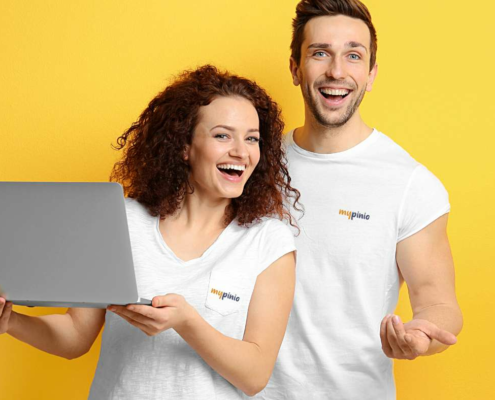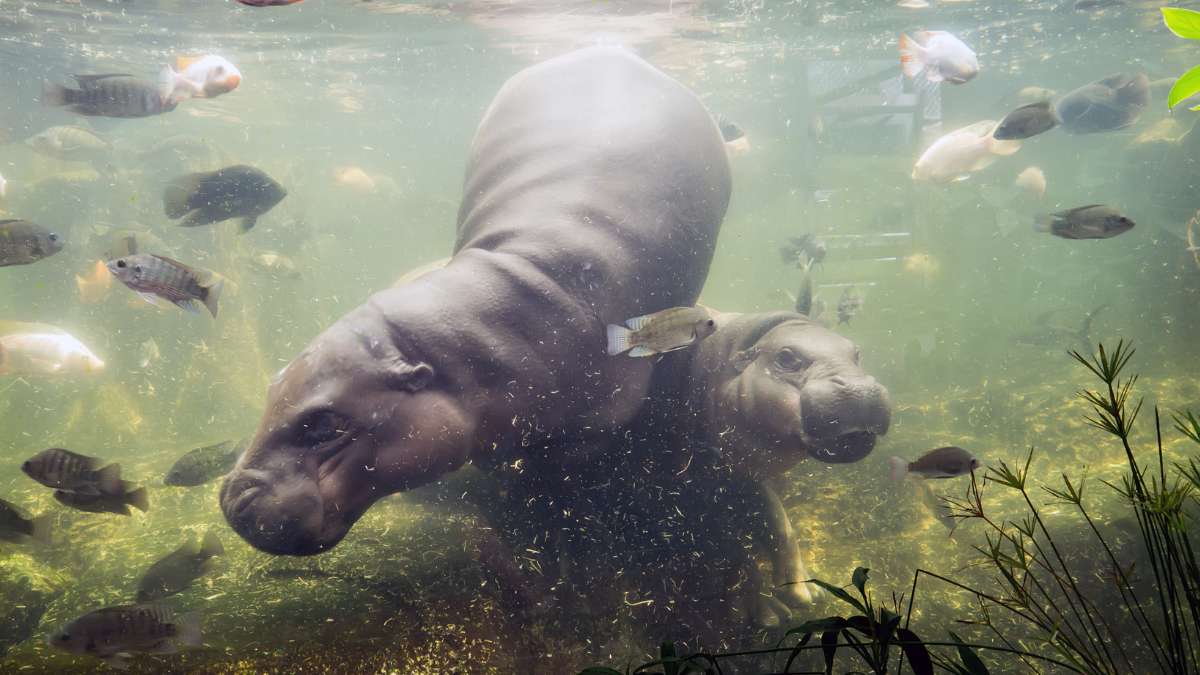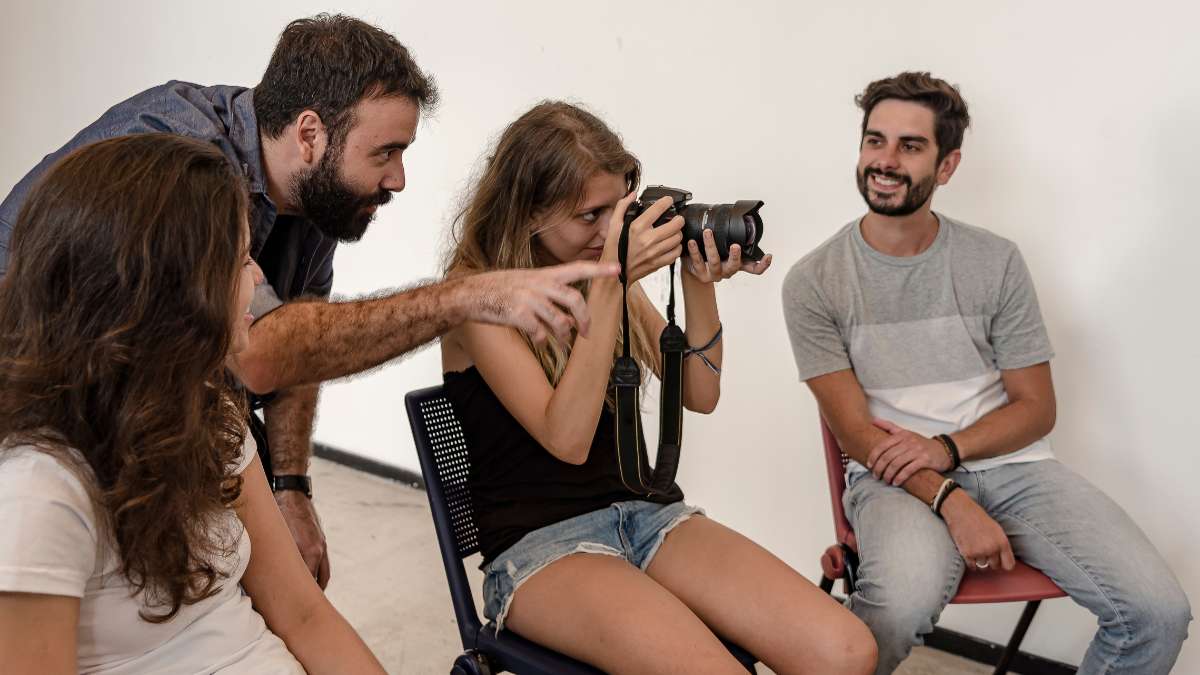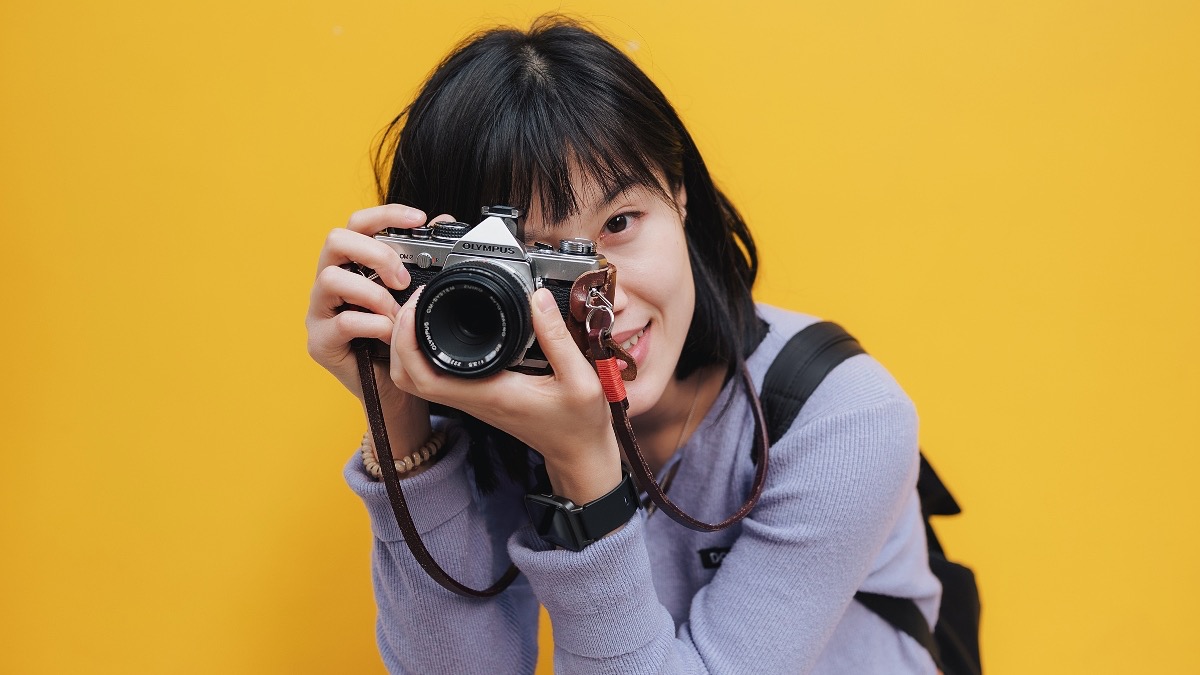 https://www.mypinio.com/wp-content/uploads/2023/02/How-to-find-promo-codes-easily.jpg
788
1400
mypinio
https://mypinio.com/wp-content/uploads/2022/04/mypinio_logo-1.png
mypinio2023-02-13 12:03:402023-02-13 12:06:15Promo Code: This is how easy you can find them to save money
https://www.mypinio.com/wp-content/uploads/2023/02/How-to-find-promo-codes-easily.jpg
788
1400
mypinio
https://mypinio.com/wp-content/uploads/2022/04/mypinio_logo-1.png
mypinio2023-02-13 12:03:402023-02-13 12:06:15Promo Code: This is how easy you can find them to save moneyCONTENT
- 1 What is documentary photography?
- 2 The history of documentary photography
- 3 Which important documentary photographers were or are there?
- 4 What attention is paid to documentary photography in arts?
- 5 Criticism on documentary photography
- 6 What contribution does documentary photography make with regard to current crises?
- 7 How to become a documentary photographer: Training and education
- 8 Earn vouchers now, increase your camera equipment and discuss photography with us
What is documentary photography?
Documentary photography is a type of photography that focuses on documenting events, people, places and issues in the real world. It is characterised by its realistic approach and seeks to portray the world as it actually is, without altering or manipulating it. Documentary photographers often use photography to address social and political issues, but it can also be used anywhere to document events or conditions, such as natural disasters, wars or historical events. In contrast to artistic photography, which often focuses on aesthetics and creative expression, documentary photography is primarily concerned with conveying information and facts in a visual way.

Example of a documentary photograph: Documentary photography shows, among other things, real life circumstances of people. Source: Canva.
The history of documentary photography
Documentary photography has its roots in the early history of photography in the 19th century. At that time, photographs were mainly used to document places, buildings and landscapes, especially in the fields of architecture and landscape design. In the late 1800s and early 1900s, photographers became more interested in documenting social and political issues, and documentary photography became an important tool for depicting changes and problems in society.
A significant milestone in the history of documentary photography was the founding of the Magnum Photos photo agency in 1947 by leading photographers such as Henri Cartier-Bresson and Robert Capa. Magnum Photos became an important meeting place for documentary photographers and was instrumental in the spread of documentary photography. In the 1950s and 60s, documentary photography experienced a boom when photographers such as W. Eugene Smith and Dorothea Lange published important works dealing with social and political issues.
“The whole point of taking pictures is so that you don’t have to explain things with words”
– Eliott Erwitt
In the following decades, documentary photography has continued to evolve and now encompasses a wide range of subjects and styles. There are many renowned documentary photographers whose work addresses important issues and brings them to the public’s attention. Today, documentary photography remains an important tool to depict and understand changes and problems in the world.
Which important documentary photographers were or are there?
There are many important documentary photographers who have published important works and have had a significant impact on the history of documentary photography. There are, of course, many more important documentary photographers than those listed here. This overview is only meant to serve as a source of inspiration. Documentary photography is a broad and diverse field that encompasses many different perspectives and styles. There are always new documentary photographers who take important issues and bring them to the public’s attention. Here are some well-known documentary photographers:
- Ansel Adams: Adams was an American landscape and nature photographer best known for his photographs of the American West Coast. He is known for his precise and detailed photographs and published important works such as “The American Wilderness”.
- August Sander: Sander was a German photographer best known for his portraits. He is known for his precise and detailed photographs and has published significant works such as “The People of the 20th Century”.
- Henri Cartier-Bresson:Cartier-Bresson is considered one of the founders of documentary photography and is known for his photographic essays dealing with social and political issues. He was one of the founders of the photo agency Magnum Photos and has published important works such as “The Decisive Moment”.
- Eliot Erwitt: Eliot Erwitt is an American photographer best known for his documentary photography and street photography. He is known for his ironic and witty photographs and has published significant works such as “Kisses Sweeter Than Wine”. Erwitt was a member of the Magnum Photos photo agency and has worked for renowned magazines such as “Life”. His photographs have explored themes such as everyday life, culture and society and are characterised by their simplicity and beauty. Erwitt is an important representative of documentary photography and has produced many significant works.
- Vivian Maier: Vivian Maier was an American photographer best known for her street photography. She is known for her sensitive and emotional photographs and has produced many significant works. Maier worked as a nanny and nanny and photographed the streets and people of Chicago and New York in her spare time. Her photographs were only discovered after her death and have quickly become an important part of documentary photography. Maier is an example that great photography does not necessarily have to come from professional photographers, but can also come from amateurs.
- Sebastião Salgado: Salgado is a Brazilian documentary photographer who specialises in documenting social and political issues. He is known for his extensive photo reportages that address issues such as poverty, refugees and environmental pollution.
- Steve McCurry: McCurry is an American photographer best known for his photographs of the Middle East and South Asia. He is known for his vivid and emotional photographs and has published important works such as “Afghan Girl”.
- Doris Ulmann: Ulmann was an American photographer best known for her portraits of rural communities. She is known for her sensitive and emotional photographs and has published significant work such as “The Miners”.
- Don McCullin: McCullin is a British photographer who specialises in documenting war and conflict. He is known for his dangerous and emotional photographs and has published significant works such as “The War Photography”.
- Eve Arnold: Arnold was an American photographer best known for her portraits. She has published important works such as “The Women of Harlem”, which deal with social and cultural issues.
- Martin Parr: Parr is a British photographer who specialises in documenting pop culture and everyday life. He is known for his ironic and critical photographs and has published significant works such as “The British”.
- Yann Arthus-Bertrand: Arthus-Bertrand is a French photographer and filmmaker who specialises in documenting landscapes and nature. He is known for his extensive photo reportages that address issues such as pollution and climate change.
- David Doubilet: Doubilet is an American underwater photographer who specialises in documenting underwater landscapes and habitats. He is known for his detailed and stunning photographs and has published major works such as “The Beauty of the Seas”.
- Alex Webb:Alex Webb is an American photographer who specialises in documenting pop culture and everyday life. He is known for his ironic and critical photographs and has published significant works such as “The Border”.
- Annie Leibovitz: Leibovitz is an American photographer best known for her portraits of celebrities. She has published major works such as “The Stars” and has worked for renowned magazines such as “Vanity Fair” and “Rolling Stone”.
- Jane Bown: Bown is a British photographer best known for her portraits. She has published major works such as “The Greats” and has worked for renowned magazines such as “The Observer”.
- Cindy Sherman: Sherman is an American photographer who specialises in women’s self-expression and understanding of their roles. She is known for her artistic and provocative photographs and has published important works such as “Untitled Film Stills”.
- Rineke Dijkstra: Dijkstra is a Dutch photographer who specialises in documenting young people and change. She is known for her sensitive and emotional photographs and has published significant works such as “The Beach Portraits”.
- Wolfgang Tillmans: Tillmans is a German photographer who specialises in documenting everyday life and pop culture. He is known for his unconventional and experimental shots and has published significant works such as “Lutz & Alex”.
- Helga Paris: Paris is a German photographer who specialises in documenting everyday life and society. She is known for her sensitive and emotional photographs and has published important works such as “Die Frauen der DDR”.
- Candida Höfer: Höfer is a German photographer who specialises in documenting architecture and public spaces. She is known for her precise and detailed photographs and has published significant works such as “The Libraries”.

Documentary photography is not only about people’s living conditions. Animals and nature are also popular subjects in documentary photography. Source: Canva.
What attention is paid to documentary photography in arts?
Documentary photography has a long tradition in the art world and has been recognised as an important part of photography for decades. It is shown in museums, galleries and art exhibitions and is also published in art books and catalogues. Documentary photographers are often highly regarded in the art world and their work is highly valued. Documentary photography is considered an art form that provides insight into social, political and cultural issues and shows the world from a different perspective. It can also serve as a means of education and a call to action. Documentary photography in architecture refers to the taking of images of buildings and other architectural objects with the aim of documenting and showing the architecture and its surroundings and documenting

Documentary photography has a firm place in the fields of art and architecture, in the combination of the two. Photo: Thomas Klingberg
Criticism on documentary photography
- Lack of objectivity: Documentary photographers are often accused of not taking their photos objectively, but of putting their own perspective and opinion into the pictures. This can lead to photos being manipulated or incompletely represented, thus distorting the truth.
- Colonialist perspectives: Some critics argue that documentary photography is often characterised by colonialist perspectives and that photographers from Western countries often take photos of people in other parts of the world without fully understanding or respecting their cultures and circumstances.
- Ethics: Documentary photographers often have to consider ethical issues when taking and publishing their photos. These questions concern, for example, whether photographing certain events or people is disrespectful or unethical, and whether the privacy of those photographed is respected.
- Lack of representativeness: Some critics argue that documentary photographs are not always representative of the people or events they show. Documentary photographers may select and present their shots to convey certain messages or perspectives, which can lead to the photos being incomplete or one-sided.
- Stereotyping: There is also criticism that documentary photographers often convey stereotypes and prejudices by portraying certain people or cultures in a particular way. This can lead to the photos conveying stereotypical or one-sided images that do not reflect the diversity and complexity of people and cultures.
- Lack of authenticity: The fact that documentary photography is not always authentic and that photographers sometimes manipulate or edit their shots to convey certain messages or perspectives is a common criticism. Lack of authenticity can lead to photos not reflecting true reality and showing a distorted image.
- Sensationalism: Some critics argue that documentary photography practitioners sometimes pursue sensationalism and that they take and publish photos of shocking or distressing events to attract attention themselves, rather than focusing on the important social issues.
- Incompleteness: That documentary photography shows an incomplete picture of reality and that it shows only a fraction of the story or reality is a very common criticism. This can lead to the photos being one-sided or distorted and not reflecting the complete truth.
- Misuse to achieve political goals: There are unfortunately also cases where documentary photography is misused to pursue a certain agenda or to push through political goals.
“The worst thing is to feel that as a photographer I am benefiting from someone else’s tragedy. This idea haunts me. It is something I have to reckon with every day because I know that if I ever allow genuine compassion to be overtaken by personal ambition I will have sold my soul. The stakes are simply too high for me to believe otherwise.”
– James Nachtwey
What contribution does documentary photography make with regard to current crises?
Documentary photography can make an important contribution to educating the public about current crises and raising awareness about these issues. Photographers working on crises can take pictures of places and events that show the effects of crises, such as war, natural disasters, famine or refugee crises. They can also take pictures of people affected by crises, such as refugees, victims of wars or communities affected by natural disasters. Documentary photography can help keep these issues present in the media and ensure that they are seen by a wide audience. It can also help to evoke emotion and empathy in viewers, which can lead to them becoming more interested in these issues and committed to change.

Many photographers in the field of documentary photography turn to the topic of climate change and document the changes on earth, as in this symbolic photo
Climate and environment
There are many documentary photographers who deal with climate and environmental issues and take pictures of places and events that show the effects of pollution or climate change. Some well-known documentary photographers who deal with these issues are:
- James Balog: Balog is an American photographer who specialises in documenting climate change and its effects on nature. He has become known for his photo series “Extreme Ice Survey”, in which he documented the melting glaciers in the Arctic and Antarctic.
- Yann Arthus-Bertrand: Arthus-Bertrand is a French photographer and filmmaker who specialises in documenting environmental issues and the relationship between humans and nature. He has become known for his photography books “The Earth from Above” and “The Earth from Above – a Portrait of the Planet”, in which he took pictures of various places around the world.
- Sebastian Copeland: Copeland is an American photographer and adventurer who specialises in documenting climate change and natural disasters. He is known for his photo series “Antarctica: The Great White Silence”, in which he documented the effects of climate change on Antarctica.
- Edward Burtynsky: Burtynsky is a Canadian photographer who specialises in documenting industry and pollution. He has become known for his photo series “Manufactured Landscapes”, in which he documented the effects of industry on the landscape.
Hunger, poverty, escape and war
Also, and in particular, the topics of hunger, poverty, flight and war receive special attention in documentary photography. Important contemporary representatives of documentary photography who deal with these topics include:
- Bashar Asad: Asad is a Syrian photographer who specialises in documenting wars and refugees. He has become known for his photo series “The Syrian War”, in which he documented the effects of the Syrian war on the civilian population.
- Anastasia Taylor-Lind: Taylor-Lind is a British photographer who specialises in documenting wars, refugees and social injustices. She has become known for her photo series “The Invisible Army”, in which she documented the impact of wars and refugee crises on women and girls.
- Moises Saman: Saman is a Peruvian-American photographer who specialises in documenting wars, refugees and social injustices. He has become known for his photo series “The Fight for Syria”, in which he documented the effects of the Syrian war on the civilian population.
- Moises Saman: Saman is a Peruvian-American photographer who specialises in documenting wars, refugees and social injustices. He has become known for his photo series “The Fight for Syria”, in which he documented the effects of the Syrian war on the civilian population.
- Alice Martins: Martins is a Brazilian photographer who specialises in documenting poverty, refugees and social injustices. She has become known for her photo series “Invisible Lives”, in which she documented the effects of poverty and social injustice on women and girls.
- Pauline Beugnies: Beugnies is a Belgian photographer who specialises in documenting wars, refugees and social injustices. She has become known for her photo series “The Invisible Enemy”, in which she documented the impact of wars and refugee crises on women and girls.
- Mads Nissen: Nissen is a Danish photographer who specialises in documenting wars, refugees and social injustices. He has become known for his photo series “The Price of Paradise”, in which he documented the effects of the war in Ukraine on the civilian population.
- Mustafa Hassona: Hassona is a Syrian photographer who specialises in documenting wars and refugees. He has become known for his photo series “The Syrian War”, in which he documented the effects of the Syrian war on the civilian population.
How to become a documentary photographer: Training and education
To become a documentary photographer, there is no formal training path. Some photographers have an education in photography, while others have an education in another field and later specialise in documentary photography. A good way to gain experience and knowledge is to work as an assistant for experienced photographers or to practice photography in your spare time. It is important to constantly educate yourself and keep up to date with the latest developments and techniques in the industry. It is also important to build a strong portfolio to impress potential clients or employers.
“Your first 10,000 photos are your worst”
– Henri Cartier-Bresson
It is possible to pursue a degree in art or photography to become a documentary photographer. Many art colleges offer degree programmes in photography that specialise in different areas of photography, such as documentary photography. These degree programmes can teach you the technical skills you need to be successful, as well as the opportunity to develop your artistic eye and skills in dealing with different subjects and themes. Studying can also allow you to network and make contacts, which is important when working independently or looking for work. However, it is important to note that studying is not the only way to become a documentary photographer. There are many successful documentary photographers who do not have a formal university degree and have mainly educated themselves through practice and self-study.

Training in documentary photography can be helpful for a career, but it is not a prerequisite. Many photographers who are and have been active in the field of documentary photography have learned photography through self-study
What are the famous training institutes for documentary photography in the world?
There are many famous photography training institutes around the world that offer formal photography degrees as well as advanced courses and workshops. Once you have trained or studied photography, you can work in virtually any genre of photography, including documentary photography. Here are some examples of reputable photography training institutes:
- International Center of Photography (ICP) in New York City, USA: ICP offers a wide range of photography courses and programmes for pupils of all levels, from beginner to advanced.
- London College of Communication (LCC) in London, UK: LCC offers a BA and MA in Photography, as well as additional courses and workshops.
- Royal Academy of Art (KABK) in The Hague, Netherlands: KABK is one of the oldest art schools in Europe and offers an extensive photography programme, including a BA and an MA in Photography.
- Parsons School of Design in New York City, USA: Parsons offers a BFA and an MFA in Photography.
- Academy of Art University in San Francisco, USA: AAU offers a BFA and an MFA in Photography, as well as additional courses and workshops.
- Tokyo Institute of Photography in Japan: It offers a full range of photography courses, both beginner and advanced.
- Hanover University of Applied Sciences and Arts in Germany: It offers a wide range of photography education from Bachelor’s to Master’s programmes.
- École Nationale Supérieure de la Photographie in Arles, France: This renowned school offers a wide range of photography courses, from beginner to advanced, and some of Europe’s most renowned professors and photographers teach there.
- Central Saint Martins in London, UK: One of the most prestigious art schools in Europe, CSM offers a BA in Photography and offers a wide range of courses and workshops in photography.
- Massachusetts College of Art and Design in Boston, USA: offers a BFA and an MFA in Photography.
- Rhode Island School of Design (RISD) in Providence, USA: offering a BFA and an MFA in Photography.
- Savannah College of Art and Design (SCAD) in Savannah, USA: offers a BFA and an MFA in Photography.
- Tama Art University in Tokyo, Japan: a renowned institute for photography in Japan.
- The Australian Centre for Photography in Sydney, Australia: a renowned centre for photography offering a wide range of courses and workshops.
- Kunstakademie Düsseldorf, Germany. One of the most renowned art academies in the world is the Kunstakademie Düsseldorf. A great many famous photographers studied here and became successful photographers, including Andreas Gursky or Thomas Struth.
Can I work in the field of documentary photography even if I do not have a degree from a university or training as a photographer?
It is possible to work in the field of documentary photography even if you do not have a formal degree in photography or training as a photographer. Many documentary photographers have a background in other fields and later specialised in documentary photography. What is most important is a strong passion for photography and an interest in capturing important events and issues around the world.
There are also many opportunities to work as a freelance documentary photographer, doing projects independently and selling them to media or publishers, or taking on projects on your own initiative and seeking and organising funding yourself.
Are there famous documentary photographers without a degree?
There are many famous documentary photographers who have no formal degree in photography or professional training. One of them is Elliott Erwitt, an American photographer who is mainly known as a documentary photographer. Erwitt began his career as a photographer by working as an assistant for well-known photographers such as Robert Capa and David “Chim” Seymour in the late 1940s and early 1950s. He had no formal training in photography, however, and yet he made it to the top of the famous Magnum photo agency, an association of photographers in the field of documentary photography.
Erwitt did, however, deepen his skills and knowledge of photography over the years through self-study and by working with experienced photographers. He has built an impressive career as a documentary photographer and has worked for many prestigious magazines and newspapers. He has also published numerous photography books and received many awards and honours for his work.
Earn vouchers now, increase your camera equipment and discuss photography with us
Camera equipment is very expensive. By regularly participating in paid surveys in our community, you can earn some money on the side, save it up and convert it into vouchers that you can then redeem at many online shops, such as amazon or many other popular shops.
If you feel like discussing this blog article with us, you can do so in our community! We welcome your suggestions and your experiences as a photographer in the field of documentary photography!
read also
#paidsurveys #livepolls #premiummember★ #earnmoney #ebayvouchers #ikeavouchers #gamingvouchers #amazonvouchers
[shariff]
Keywords of this blog post
Documentary Photography | Photography | History | Photographer | Education | Become a documentary photographer




